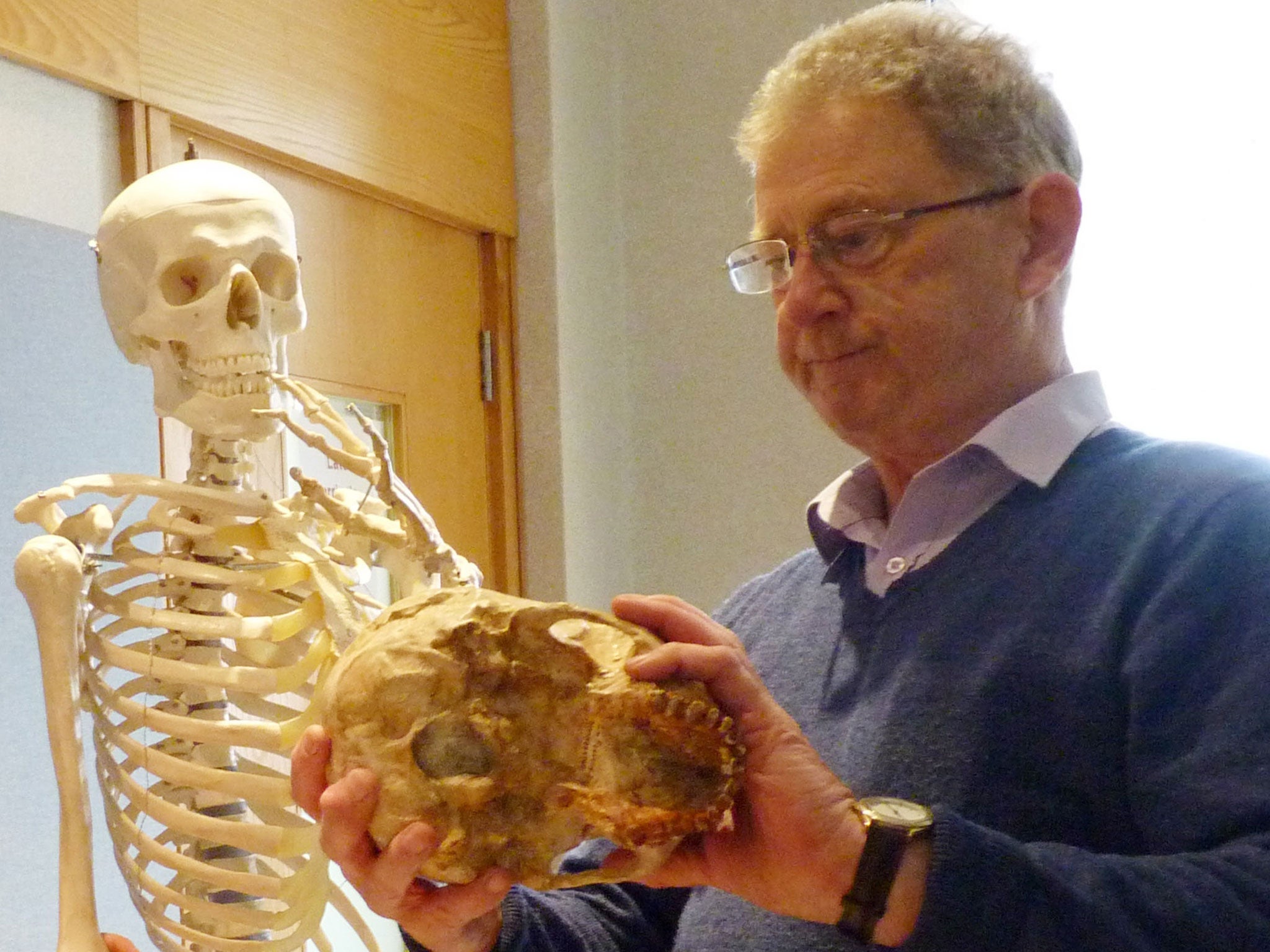Professor Tony Legge: Authority on the archaeology of animal bones

Tony Legge was an outstanding archaeologist who worked especially in zooarchaeology, the study of animal bones from archaeological excavations. He made major contributions to our understanding of prehistoric people's relationships to animals, including the beginnings of herding. His passion for the subject and deep scepticism of colleagues who only knew about animals from books enthused his students, including many adult learners, as he himself had been.
On leaving school in 1957 he joined the Pig Physiology Unit at the Institute of Animal Physiology at Babraham, outside Cambridge, returning to the job after National Service. The year he left school he spent a week digging at a Neolithic site in the fens being excavated by Cambridge's Disney Professor of Archaeology, Grahame Clark. Here he fell in with Eric Higgs, Clark's charismatic research assistant, who had joined Clark's department after a career as a Shropshire sheep farmer.
In 1965 Legge saw the documentary film Springs of St George about Higgs' pioneering excavations of Palaeolithic caves in Epirus in Greece; he resigned from his job, was accepted to read archaeology at Churchill College, and spent the summer with Higgs in Greece, the first of seven seasons he spent working for Higgs, in Greece and then Israel, revelling in the famously spartan living conditions of a Higgs excavation. It was in Higgs' "bone room" in Cambridge that he learned his zooarchaeology, and after graduating in 1969 it was as a zooarchaeologist that he joined a project directed by Higgs on the beginnings of farming and early history of domestication.
In 1974 he became tutor in archaeology in the Department of Continuing Education at the University of London (now Birkbeck College), until his retirement. He set up his own bone room in Russell Square, where he imbued generations of students with his commitment to studying the archaeology of animals as a powerful way in to the lives of the people who had hunted or herded them. He was promoted to Professor of Environmental Archaeology and after retirement was appointed Senior Fellow at the McDonald Institute for Archaeological Research at Cambridge University.
One of the assumed signatures of animal herding was a preponderance of young animals in a bone sample, a characteristic of many samples of sheep and goat bones at early Near East sites. Legge's graduate work, typically uncomfortable for current orthodoxy, was to show that collections of gazelle bones at pre-Neolithic sites in Israel had the same preponderance of young bones, implying that hunter-gatherers might have tried herding gazelle before sheep and goats.
He developed techniques now common in zooarchaeology to tease out details of Neolithic herding practices in England; he suggested what has now been confirmed by biomolecular techniques, that these farmers had learned to milk cattle as well as raise them for meat. In the 1980s he collaborated with Peter Rowley-Conwy in a re-study of the animal bones excavated in the 1940s by Grahame Clark at the Mesolithic encampment of Star Carr in Yorkshire, demonstrating not just hunting methods but also how the site was part of a wider landscape of seasonal movements, a study that remains one of the best insights into the hunting and gathering lives of the inhabitants of these islands before the onset of farming.
His other best-known project was with Andrew Moore on excavations of the incipient farming village of Abu Hureyra in Syria. His analysis of the animal bones there traced the shift from intensive and communal hunting of gazelle, using stone enclosures to trap them, to sheep- and goat-herding. The work correlated with plant remains, demonstrating how people at Abu Hureyra were managing wild plants and animals for millennia before switching to plants and animals now categorised as domestic.
Like the Star Carr study, his work at Abu Hureyra explored new ways of thinking about hunters and herders, and how the former became the latter. He pursued the same interests on projects in Croatia, Cyprus, Egypt, Serbia, Spain and Turkmenistan, and at the time of his death was re-studying the bones from the Haua Fteah cave in Libya studied by Eric Higgs.
He was profoundly suspicious of committees and bureaucratic processes and thrived on his reputation as one of academic archaeology's awkward squad; it was typical that he turned down an MBE a few months before his death. In the trench, in the laboratory, or preferably in the pub with friends or students, he was tremendous company, a raconteur prone to devastating one-liners, the scourge of the pompous and a deadly mimic.
He was sceptical of new theoretical currents in archaeology ("what's the point of using a model that you can't even spell?") and more than any of the Cambridge students who gathered around Eric Higgs he carried the flame for Higgs' revolutionary ideas about the economic drivers of domestication and the origins of agriculture.
At an event celebrating Higgs he ended his address: "I would sell myself to the devil to re-live those years or, if not sell, I would enter into serious negotiations." He lived life to the full, as committed to the village he lived in (writing its history, repairing its church roof) as to his archaeology.
Graeme Barker
Tony Legge, archaeologist: born Cambridge June 6 1939; married firstly (divorced; two children), secondly Liz Wells; died Harlton, Cambridgeshire 4 February 2013.
Subscribe to Independent Premium to bookmark this article
Want to bookmark your favourite articles and stories to read or reference later? Start your Independent Premium subscription today.

Join our commenting forum
Join thought-provoking conversations, follow other Independent readers and see their replies